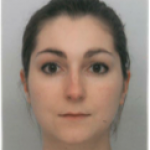Link to Pubmed [PMID] – 21490379
J. Med. Genet. 2011 Jul;48(7):497-504
BACKGROUND: The RET/GDNF signalling pathway plays a crucial role during development of the kidneys and the enteric nervous system. In humans, RET activating mutations cause multiple endocrine neoplasia, whereas inactivating mutations are responsible for Hirschsprung disease. RET mutations have also been reported in fetuses with renal agenesis, based on analysis of a small series of samples.
OBJECTIVE AND METHODS: To characterise better the involvement of RET and GDNF in kidney development defects, a series of 105 fetuses with bilateral defects, including renal agenesis, severe hypodysplasia or multicystic dysplastic kidney, was studied. RET and GDNF coding sequences, evolutionary conserved non-coding regions (ECRs) in promoters, 3’UTRs, and RET intron 1 were analysed. Copy number variations at these loci were also investigated.
RESULTS: The study identified: (1) a low frequency (<7%) of potential mutations in the RET coding sequence, with inheritance from the healthy father for four of them; (2) no GDNF mutation; (3) similar allele frequencies in patients and controls for most single nucleotide polymorphism variants, except for RET intron 1 variant rs2506012 that was significantly more frequent in affected fetuses than in controls (6% vs 2%, p=0.01); (4) distribution of the few rare RET variants unidentified in controls into the various 5'-ECRs; (5) absence of copy number variations.
CONCLUSION: These results suggest that genomic alteration of RET or GDNF is not a major mechanism leading to renal agenesis and other severe kidney development defects. Analysis of a larger series of patients will be necessary to validate the association of the RET intron 1 variant rs2506012 with renal development defects.

